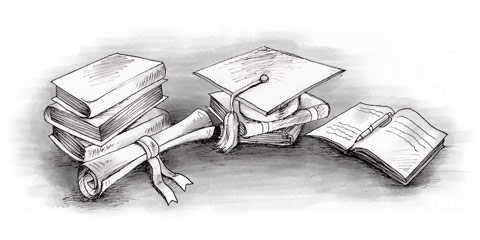Public education has been struggling for a long time. A lack of funding from the government and huge issues regarding infrastructure and personnel have greatly weakened the entire system. Corruption within led to the past Education Secretary being jailed, and the whole institution has struggled to recover. The last education reform implemented in the country was that was greatly opposed by teachers around the country as their positions were poorly regulated and many risked losing their jobs because of a lack of preparedness.
There is a high drop-out rate as many children are forced to abandon their education so they can work and help out their families. Public high school graduation rates are around 50%. While education is compulsory until the age of 16, it is rarely enforced in rural or low income areas. Rural schools are underfunded and have a shortage of many crucial things that are needed to provide quality education. Private schools offer a higher educational standard because they don’t rely on the government, and therefore can have access to proper funding.
The system
Preschool
Preschool in Mexico can be called jardin de infantes (children’s garden) or kindergarden.
Children attend preschool from the ages of 3 to 5. Preschool became a constitutional obligation in 2002. From 2003 to 2015, enrolment increased by 30%, according to the Secretary of Public Education (SEP). There are many options to choose from, ranging from private preschools, to general ones, and indigenous ones. In Mexico, only around 40% of children attend preschool.
Primary and secondary school
Basic education is divided into three levels: primary school (years 1-6), junior high school (years 7-9), and high school (years 10-12.)
Primaria, or primary school, became compulsory in 2009 and it was determined to be basic education by the Secretaría de Educación Pública (SEP) and therefore free. SEP standardizes the curriculum for both public and private schools. The mandatory subjects include Spanish, mathematics, natural sciences, history, geography, art, and physical education.
In public secondary school, students can choose from either an academic track or a technical track. Private schools do not give you the option of following a technical track, but do offer classes as supplementary subjects. In the technical tracks, there is a strong focus on vocational, commercial, and artistic training. Many of these are rooted in indigenous traditions.
Preparatoria, or prepa (high school), is the third and last stage of schooling in Mexico. Here, students continue with the track they chose in secondary school, and will eventually lead them to a university (if they wish to continue studying) or straight into the workforce.
Academic year
The academic calendar for elementary and secondary education begins in September and ends on June 30th, with holidays in December and April. The academic calendar for institutions of higher education varies. Some universities offer year-long courses, although most institutions now employ a semester system.
Grading system in Mexico
The grading system for most institutions at all levels ranges from 1 to 10 with the following grades:
- 9-10: Muy Bien (MB) – very good
- 8: Bien (B) – good
- 6-7: Suficiente (S) – sufficient
- 0-5: Reprobado (R) - fail
Application
In order to apply for public school, you just need to enrol in a school within your school district. Once your child is 4 they have to go to preschool, at 6 to primary school, at 15 to secondary, and at 16 to preparatory. You have to have your child’s Clave Única de Registro de Población or CURP (an ID number for residents) and an email address to begin the pre-inscription process online. You will have to go to your assigned educational module with the following documents in their original version and a copy:
- Birth certificate
- CURP
- A medical certificate from the last three months
- Up to date National Vaccination Card
- Four child size photographs in black and white or colour
- Preschool evaluation if continuing onto primary
- Primary evaluation if continuing onto secondary
Remember that the process (and schooling) is completely free.

